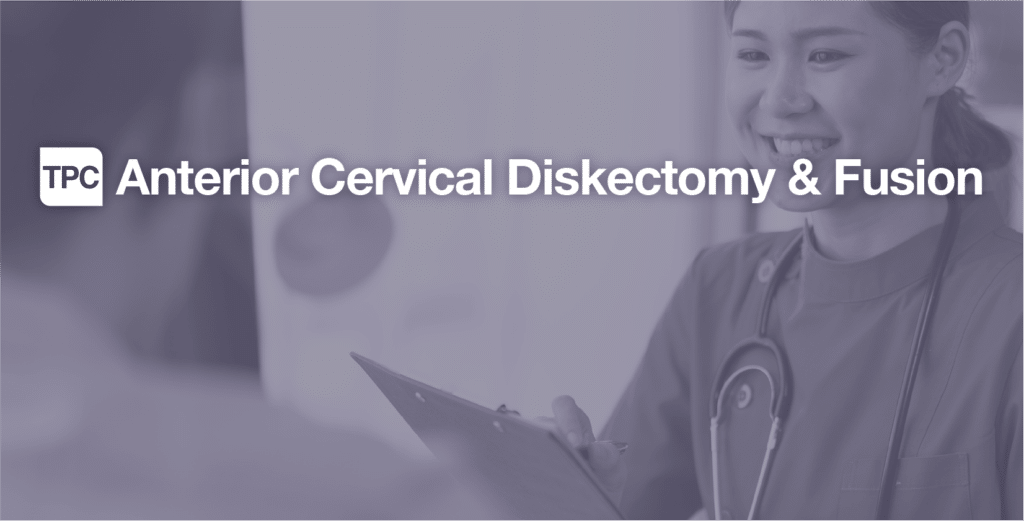Anterior Cervical Diskectomy and Fusion (ACDF)
The Anterior Cervical Diskectomy and Fusion (ACDF) provides effective relief from cervical pain and sensory disturbances, all the while restoring functionality to the neck and spine. The procedure removes the damaged disc, causing pain and complications, and fuses neighboring vertebrae to enhance cervical stability and alignment.

What is Anterior Cervical Diskectomy and Fusion?
ACDF is done to relieve pain and restore function to the neck and spine. There are two parts to this procedure: the cervical diskectomy and the fusion. The cervical diskectomy takes an anterior approach, meaning the removal of the disc is done through the front of the cervical spine.
Once the damaged disc is removed from between the two vertebral bones, the fusion takes place. Removing the damaged disc relieves pressure on the nerves, which can contribute to pain, numbness, and weakness. Fusing the neighboring vertebrae through bone grafting or implantation stabilizes the area to reduce the pain and weakness brought on by the damaged disc.
What Types of Pain Does Anterior Cervical Diskectomy and Fusion Treat?
ACDF can be used to treat several conditions, including cervical disc herniations and cervical canal stenosis (narrowing of the tube where the nerves and spinal cord travel). The symptoms typically associated with these types of conditions that ACDF can treat include pain, numbness, or weakness in the neck, arms, or hands.
How Does Anterior Cervical Diskectomy and Fusion Work?
Patients who undergo ACDF will be placed under anesthesia during the procedure, rendering it quick and painless. The surgeon will make an incision in the front of the neck to access the cervical spine. The damaged disc is removed to release built-up pressure contributing to pain in the spinal cord and nerve roots. Following this, a fusion is performed on the adjacent vertebrae to promote stability.
Expectations and Recovery
The primary objective of ACDF is to alleviate pain and associated symptoms resulting from damaged or degenerated discs. That said, following your procedure, you may need to stay in the hospital for up to two days, depending on how well your body adjusts. Pain management strategies for post-operative care can be employed as your body continues healing, including medication, physical therapy, and temporary use of a neck brace.
While rare, a few patients may encounter post-procedural complications, such as discomfort or swallowing difficulties. Should you experience these, it’s important to promptly inform your doctor, allowing them to investigate and address any concerns.


Get the care you need within 24 hours*
We know when you’re looking for relief for your chronic pain, you can’t wait any longer than you already have. This is why we can schedule you with an appointment within 24 hours at most of our pain centers across the Valley, so you can start your journey to life-long pain relief as soon as tomorrow.



